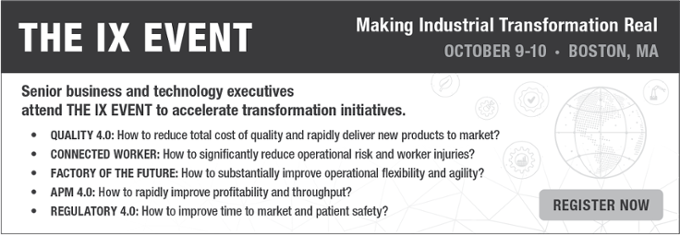Technology spending is a given. Especially today, when Digital Transformation is a fact-of-life in nearly every industry. Executives know they need to invest in technology to remain competitive. Industry leaders have tied their Industrial Transformation (IX) strategy to making the right technology investments. It is more than consultant-speak or media hype to say that companies that don’t invest in technology won’t be able to attract or retain top talent, and that technology drives global competitiveness.
Every one of LNS Research's latest surveys validate all of the above assertions on digital readiness, IIoT plans, and our joint research with MESA on Analytics That Matter. We find that many of our client engagements start with the industrial organization seeking advice on which software vendor can best meet the company’s needs for an MES/MOM solution, an EHS system, a quality platform, the right IIoT platform, or an asset performance management (APM) solution. Frequently, the need to define the application scope and how it relates to other existing and proposed solutions in the organization also surfaces. It is this Operational Architecture step that ultimately drives the shortlist of vendors and solutions to evaluate.
A significant part of the Operational Architecture process is envisioning the to-be state. The scope can be as simple as defining where to place a master data model, to as broad as the entire technological footprint vision for all manufacturing IT and operational technology (OT) applications. When LNS engages with clients in workshops or strategy sessions related to the topic at hand, most of the time some part of the organization already has formulated a fairly rich vision. Therefore in most cases the company already knows the decision it needs to make, yet it struggles to make it.
But Why Is Making A Decision So Hard?
It turns out that making decisions isn’t difficult just for organizations – it’s hard in our personal lives too. On a personal level, several factors can inhibit decision making ranging from guilt, fear, low self-esteem, or even clinical depression. Lack of decision making is a form of procrastination and can happen when someone tries to compare things that aren’t easily comparable. We often look for factors that prove objectively that one choice is better than another when the reality is, many times, those factors simply do not exist.
When the decision shifts from personal to an organization, there’s even more uncertainty and difficulty; it combines all the individual personal issues plus add the dynamic of trying to get people to reach the same decision collectively. Factor in the fact that often, the decision has the potential to impact hundreds or thousands of employees, customers, or other stakeholders, and the consequences can make deciding overwhelming.
A Forbes article outlines four major reasons business leaders struggle to make decisions:
- Fear of losing control
- Status quo is comfortable
- Change management is difficult
- Being conservative is safe
In a 2018 article the Harvard Business Review reiterated these and further pointed out that when they (a person or company) delay making a decision, more often than not, it actually does more damage than whatever the decision-maker(s) feared which kept them from deciding in the first place.
Stop Trying to Quantify the Decision
In trying to overcome the risk of making a "bad" decision, many leaders try to quantify all the aspects of that decision. We can attribute some of this to the emphasis on scientific decision making from the middle of the last century. The idea was to quantify all aspects to make the optimal choice. However, there are times when you simply cannot compare apples and oranges. In many cases, the choice between alternatives is essentially a choice among equals.
Let’s examine one common example in solution selection: pursue a suite-based single (or minimal) vendor approach versus a multi-vendor best-of-breed approach. The reality is that over time, both methods have proven highly successful among leading organizations. That's not to say that there are no implications in one choice over another. There are very real organizational, architectural, and infrastructure issues. With a single vendor/suite approach, training and support is usually simplified and even potentially outsourced. However, the organization may need to accept functional compromises. With a best-of-breed approach, support, integration skills, and other technical challenges might be more significant, but training might be much easier since many best-of-breed solutions are so “fit-for-purpose” they are almost intuitive and require minimal training.
Apply Hamilton’s Wisdom
With the musical Hamilton being the hottest ticket on Broadway these days it pays to consider one of Alexander Hamilton’s less famous quotes: “Men often oppose a thing merely because they have had no agency in planning it, or because it may have been planned by those whom they dislike." Applying the sentiment to the modern enterprise, the problem isn’t what decision to make, since most of the time the choices are “either this or that.” Instead, the challenge is getting people to decide and then support the decision, so that the organization can actually move forward.
The key to all of this is giving the people impacted by the decision "agency in planning it." People will usually support a decision they may not have initially agreed with once they fully understand why it is the best decision for the enterprise. In other words, make the decision-making process transparent and involve the people affected in the decision-making process.
Circling back to technology and architecture decisions, the path to a good decision is:
- Lay out the alternatives
- Explain the implications of each choice to everyone affected
- Reach a consensus on what is best for the business in the long run
In virtually every case, making an informed decision means so much more than making a wrong decision … it avoids the harm associated with no decision.
